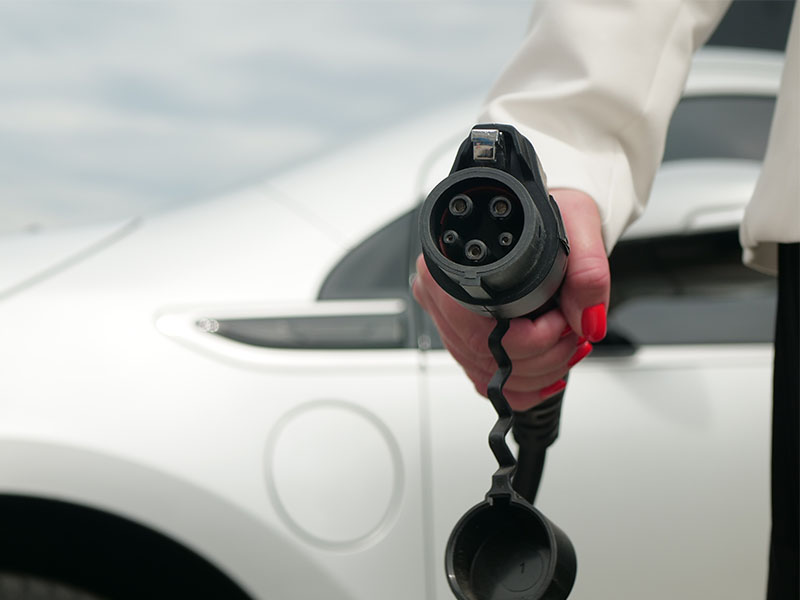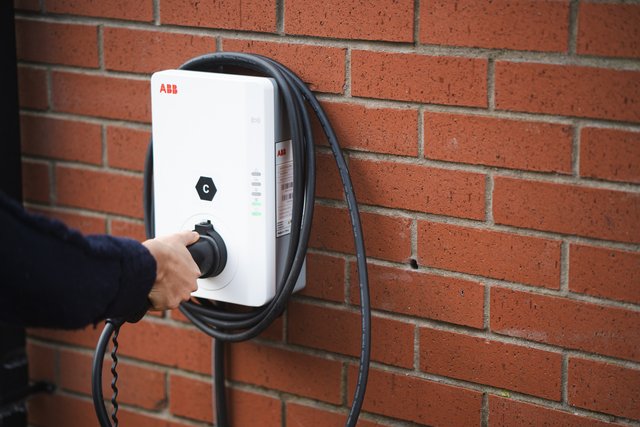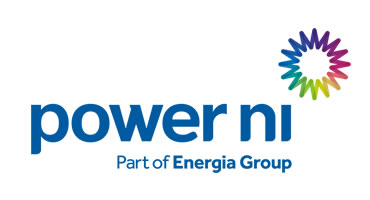You'll be glad to know that you can charge your electric car at home, either by plugging into a standard 3-pin socket or by using a dedicated EV home charger, known as a “wallbox”. A wallbox charger is safer, faster, and more cost-effective in the long run, especially if paired with an EV electricity tariff.
But first, let's see exactly how both of these home EV charging options work.
Types of EV home charging
Standard 3-Pin Socket
- All EVs come with a cable for a regular household socket.
- While this is standard, it should only be used as a last resort.
- 3-pin sockets only deliver around 2.3kW, meaning charging an average EV battery could take over 24 hours!
- Regular sockets aren’t designed for continuous high loads, increasing fire risk if used frequently.
EV Home Charger (Wallbox)
- Wallboxes are purpose-built for safe, high-powered EV charging.
- Typically provide 7kW, cutting charging times to 5–8 hours for most EVs.
- Can be installed in garages or on exterior walls of your property.
- Grants may be available for certain households in Northern Ireland.
Benefits of charging an electric car at home
Although there are many ways to charge an electric vehicle, home charging is by far the most beneficial.
Cheaper
Charging at home lets you take advantage of cheaper, off-peak rates to charge your car.
Quick
Home chargers are quicker than many standard EV chargers, saving you time and money.
Easy
It’s most convenient to charge your car while it’s parked up for the night. Simply park in your usual spot and charge overnight.
Safe
Charge somewhere you’re comfortable and your car isn’t at risk of bumps, scrapes and vandalism.
How to choose a home EV charger
Choosing a home EV charger is one of the smartest upgrades you can make as an electric car driver. But before you choose an EV home charger, you need to choose a connector type and decide between a tethered or untethered charger.
EV connector types
Just as you wouldn’t buy an Apple charger for your Android phone, you need to make sure you get an EV home charger that fits your electric car. Most EV home chargers will come with either a Type 1 or Type 2 connector.
Type 1 (5 Pin)
This is an older connector type, mainly found on early EVs like the older Nissan Leaf or Kia Soul EV. This connector is becoming rare, and most new EVs don’t use it.

Type 2 (7 Pin)
This is the current UK and European standard used on nearly all new EVs. It’s your best bet going forward, as it’s compatible with most EVs now and in the future.

-
Don’t see your connector type at public chargers?
That’s normal! Home chargers use AC electricity, while rapid public chargers use DC. These are different systems and require different plugs. At public charging stations, you’ll usually find DC plug types like CCS and CHAdeMO.
Your car’s charging flap usually has space for both AC and DC plug types, so you simply choose the right cable depending on where you’re charging.
Tethered vs untethered
EV home chargers can be either tethered or untethered. A tethered charger has a cable permanently attached to the unit, whereas an untethered charger doesn’t come with a fixed cable (you connect your own cable each time you charge).
Tethered EV Charger
This is the most convenient and tidy option. The cable is built in, so you simply unwind it and plug in your car.
However, the cable length and plug type are fixed. If you change to a car with a different connector, you’d likely need a new charger.

Untethered EV Charger
This is the most flexible charger option. You can choose different cable lengths or swap cables if you change cars. It’s also great if you have visitors with different EVs.
However, it takes slightly more effort each time you charge, and the cable usually costs extra.

Ready to choose a charger?
We offer a range of smart EV home chargers to suit different connector types and preferences for tethered or untethered setups. We also offer a free survey to help you find the best fit for your home.
Explore Power NI EV Chargers
EV home charger installation
Installing a home EV charger isn’t a DIY job. It must be carried out by a qualified electrician, ideally someone experienced with EV charging systems. Before booking an installation, we always encourage customers to ask themselves these 4 questions:
-
Are you eligible for any EV charger grants?
In Northern Ireland, EV ChargePoint grants may be available if you live in a flat, rent, or are a landlord installing a charger for tenants. Check the NI Direct website for up-to-date information on who is eligible and the amount of funding available.
-
What type of property are you living in?
Even if you live in a flat or rent your property, you may still be able to install a home charger. However, renters will likely need landlord permission and households without a driveway will need to think about how cables can be run safely. -
Where do you want the EV charger installed?
Installing your charger indoors, in a garage or shed, keeps it protected from the weather (especially useful here in Northern Ireland!) Although outdoors may be more convenient for driveway charging. -
Where is your fuse box located?
The further your charger is from your fuse box, the more complex (and potentially costly) the installation might be. We can provide you an estimate for this during a free survey.
How the EV charger installation process works
Here is how a typical EV charger installation process works with Power NI:
- Book your free survey
Register your interest online or by phone. We can then arrange a home or online survey, usually within ten days. - Get a no-obligation quote
Our partner installer visits your home or arranges an online assessment to locate the best location for your charger, your home’s electrical setup and any additional work needed. You’ll then receive a no-obligation quote for the installation. - Prepare for installation
If you decide to book an installation, you'll need to carry out a few things before the big day. Before install you should clear space where the charger will go, make sure there is sufficient access for the installer, and have your wifi password handy for smart charger set-up. - Installation day
On the day of installation your installer will mount the charger on your chosen wall, connect it to your home’s electricity, test if it works, and show you how to use it. Standard installations usually take around 2–4 hours.
Ready to get started?
Take advantage of our free home survey to check the suitability of your property and receive a no-obligation quote.
Book a Free Survey
How to use an EV home charger
Once your EV home charger is installed, it’s really simple to use. Most people use an EV home charger similar to how you might use a mobile phone charger. Give your car a full overnight charge each night, then top up during the day as needed.
Here’s what it looks like in practice.
.png?w=256&h=256&ext=.png&width=419)
Step 1.
Park close to your charger, open the car charging flap and connect the cable.

Step 2.
Charging starts automatically. Check for a charging light, or check the app.
.png?w=256&h=256&ext=.png&width=419)
Step 3.
If charging overnight, use the app to set a preferred charging time.
.png?w=256&h=256&ext=.png&width=419)
Step 4.
Once charged, unplug the cable, close the charging flap, and go!
If you’re still unsure, don’t worry! Your installer will show you exactly how your charger works and help set up any apps, so you’ll feel confident using it from day one.
How long does it take to charge an electric car at home?
The time taken to charge an EV depends on your charger’s speed, your car’s battery size, and how much you’re topping up. Charging an electric car at home usually takes anywhere from a few hours to overnight.
With a standard 7kW home charger, it typically takes between 8 to 15 hours to fully charge an electric car. As a rule of thumb, a 7kW charger adds around 30 miles of range per hour. So even an hour or two on charge is plenty for most people’s daily travel.
When is the best time to charge an electric car at home?
The best time to charge an electric car at home is usually overnight, when electricity is cheaper and the grid is less busy. For example, off-peak tariffs offer lower rates between 11pm and 7am. If you have a smart charger, you can set timers to start charging automatically during these cheaper hours.
Can you charge two electric cars at home?
Yes, you can charge two electric cars at home. Many people simply take turns charging each car overnight.
If you want to charge both cars at the same time, you’ll need two chargers and a way to share power safely between them. This is called load balancing, which helps prevent overloading your home’s electricity. All our smart EV chargers come with load balancing to make charging two cars safe and easy
What is the cost of charging an electric car at home?
The cost of charging an electric car at home depends on your electricity tariff, your car’s battery size, and how much you’re topping up.
On average, electric cars cost around 4 to 8 pence per mile to run when charged using a night rate tariff at home. By comparison, petrol cars typically cost at least 16 to 20 pence per mile, meaning EVs can be significantly cheaper to drive day-to-day.
Want to save money on EV home charging?
At Power NI, we offer dedicated EV tariffs with cheaper overnight charging rates that can halve the cost of a full car charge.
Discover Power NI EV Tariffs


